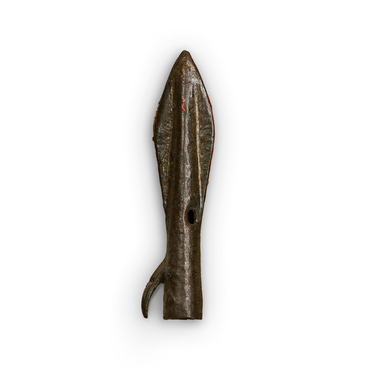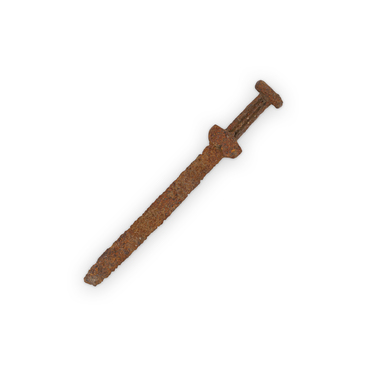One of the major ways of obtaining food for the Don Slavs was fishing. Archaeological evidence has revealed fish bones, scales, and fishing equipment at almost all the examined settlement sites. Fishing hooks are the most common find.
Contrary to the popular belief that fishing was primarily done with nets, research suggests that hook tools were also widely used. In total, over 20 examples of these tools have been discovered in Slavic sites in the Don area.
Experts distinguish hooks based on various criteria: shape, material, size, and the design of the bite (with or without the barb), as well as the presence or absence of the loop, spatula, or other part used for attaching the fishing line. Some scientists propose categorizing hooks based on their primary purpose, which influences the radius of the bend and other characteristics. This approach results in two main groups of hooks: those with the radius of the bend of up to one centimeter for fishing with a rod and those with the radius greater than one centimeter used with other types of fishing tackle.
Small hooks have been found within cultural layers of settlements from the mid-10th century, likely intended for use on simple fishing rods. These early hooks were mainly made from iron. Some lacked barbs. Instead of a traditional loop for attaching the fishing line, many of these early hooks featured extensions such as small spatulas or notches along the shaft.
In addition to the remains of ancient fishing equipment, including hooks, spindle-shaped floats were made from pine bark. They have been found in Novgorod. It is difficult to determine what materials were used for fishing lines. Animal veins, horse hair, or linen and hemp strands are likely to have been used.
Written records rarely mention fishing with rods. However, there is evidence that Yaroslav the Wise, for example, was sitting on the bank of the Dnieper with a fishing rod when he received news of Boleslaw’s attack on Rus. The author of birch bark document number 124 from the late 14th century also requested that he be sent a fishing rod. Among the records from Novgorodian scribal manuscripts of the late 15th century, notes occasionally mention fishing using seines and nets: “They fish in lake Leshoe, which has pike and sturgeon, with a fishing rod.”


